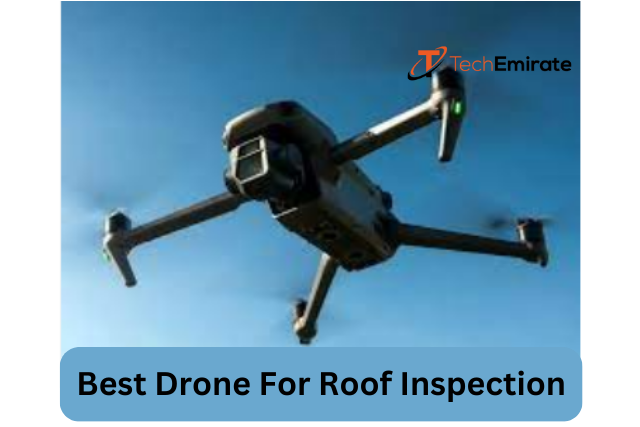The world of roof inspections is evolving, and it’s taking to the skies. Now, we’ve entered an era where technology does the flying, exploring your roof from above.
You can do inspection with it and make videos of any wedding, birthday party, etc. In case you are also one of them, find the best drone for roof inspection. You have come to the right place.
In this blog, I tell you about the drone roof inspection, which are the 5 best drones, and what things to consider in a drone for a roof.
Table of Contents
Best Drone for Roof Inspection| 6 Super Choices
- DJI Mavic 3 Pro_ Best For Roof Inspection
- Autel Robotics EVO 2 Pro_ User-Friendly Drone for Roof Inspection
- DJI Phantom 4 Pro V2.0_ Best Drone for Roof Mapping & Automated Roof Surveys
- DJI Mavic Air 2S_ Best Drone for Roof Estimating
- Parrot Anafi Work_ Best Drone for 3D Modelling Roof
- Parrot Anafi Thermal Drone_ Best Affordable Thermal Drone
DJI Mavic 3 Pro_ Best For Roof Inspection
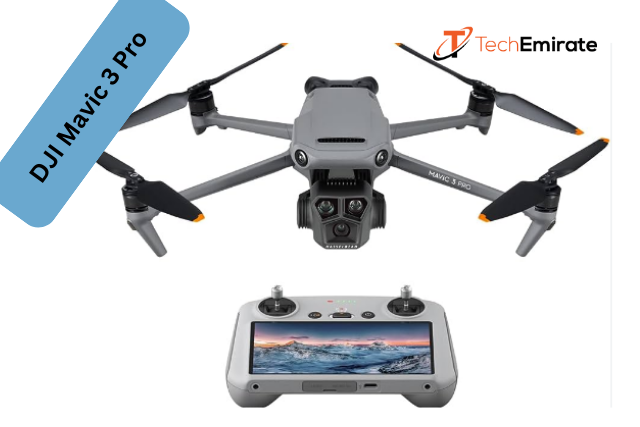
In the world of roof inspections, precision and performance are important. The DJI Mavic 3 Pro stands out as a top choice for professionals seeking the best drone for their roof inspections.
DJI has packed this powerful tool with features that will elevate your inspections to new heights.
Specifications:
The DJI Mavic 3 Pro is an impressive array of features designed to enhance your roof inspection capabilities:
Camera:
Equipped with three cameras, the Main Hasselblad Camera offers a 4/3 CMOS sensor, 24mm format equal, f/2.8-f/11, and a 20 MP capacity. This 4K drone camera supports RAW photo capture with a dynamic range of up to 12.8 stops.
Additionally, it features a Medium Tele Camera with a 1/1.3-inch CMOS, 70mm equal.
Flight Control:
The DJI Mavic 3 Pro offers integrated GPS for precise navigation. It features omnidirectional (6 directions) automatic obstacle avoidance, ensuring safe and stable flights. The automatic return-to-home function provides an added layer of security.
Flight Time:
With a remarkable flight time of up to 46 minutes, you can efficiently inspect roofs without the need for frequent battery changes.
Roof Inspection Software:
DJI’s massive market share ensures a wide array of third-party drone software designed for compatibility with their drones. This means you’ll find specialized roof inspection applications that suit your needs.
DJI also offers its inspection software for the Mavic 3, enhancing your options for efficient inspections.
Thermal Camera:
For thermal scans, the DJI Mavic 3 Pro offers a thermal camera option, making it a versatile tool for various inspection scenarios.
Weight:
Weighing in at 895 grams, the Mavic 3 Pro strikes a balance between portability and robustness, making it an ideal tool for field use.
Why Do I Love This Drone?
As a professional in the field, I absolutely love the DJI Mavic 3 Pro for a multitude of reasons. Firstly, its three-camera system allows for image quality and versatility. The flight control features, including GPS and obstacle avoidance, provide peace of mind during inspections, even on breezy days. With up to 46 minutes of flight time, I can cover large areas without the hassle of frequent battery swaps.
Pros and Cons:
Pros:
- Exceptional camera system for high-quality imagery
- Extended flight time for comprehensive inspections
- Best Drone for Roof Inspection
- Advanced flight control and obstacle avoidance
- Compatibility with a wide range of third-party software
- Thermal camera option for diverse inspection applications
Cons:
- Higher price point
“Invest in the DJI Mavic 3 Pro today and elevate your professional capabilities to new heights. Check the latest price on Amazon and take your roof inspections to the next level!”
Autel Robotics EVO 2 Pro_ User-Friendly Drone for Roof Inspection
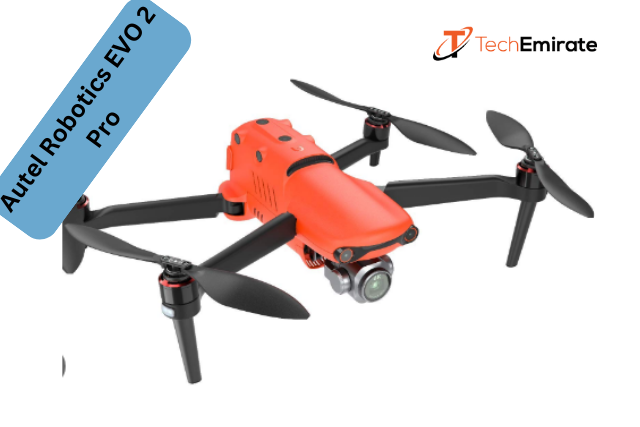
First, if you’re in the business of roof inspections, precision is your lifeline. You demand a drone that not only meets your needs but exceeds your expectations. Meet the Autel Robotics EVO 2 Pro, a drone that’s been making waves in the industry.
Specifications:
Camera:
The Autel EVO 2 Pro boasts a 20-megapixel camera with a 1″ CMOS sensor, offering exceptional image quality. With up to 8x zoom, you can capture detailed shots of even the most hard-to-reach areas.
Flight Time:
The EVO 2 Pro offers an impressive flight time of up to 40 minutes on a fresh battery. This extended flight time minimizes downtime, ensuring you can cover large roof areas in a single flight.
Weight:
Weighing in at 1,174 grams, the EVO 2 Pro strikes a balance between stability and maneuverability.
Why Do I Love This Drone?
You can operate the EVO 2 Pro without the need to create an account, ensuring a hassle-free experience. With excellent wind resistance, this drone can handle less-than-ideal weather conditions.
Pros and Cons:
Pros:
- Outstanding image quality and zoom capabilities
- Lengthy 40-minute flight time for extensive inspections
- Robust obstacle avoidance system for added safety
- Versatility in inspection mission modes
- The best drone for roof inspection
Cons:
- No included thermal camera
- Limited third-party software support
“Elevate your roof inspections and invest in the Autel EVO 2 Pro today to take your work to new heights. Your clients deserve nothing less than the best, and this drone ensures you deliver just that.”
DJI Phantom 4 Pro V2.0_ Best Drone for Roof Mapping & Automated Roof Surveys
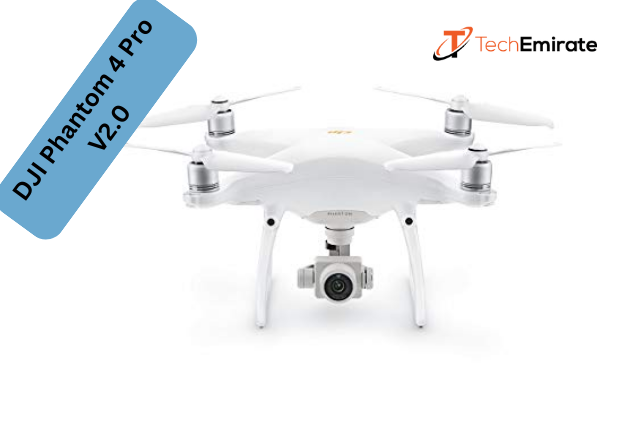
In the ever-evolving world of roof inspections, the DJI Phantom 4 Pro V2.0 stands out as a true standout. When it comes to capturing high-quality full-roof maps and graphics, this drone reigns supreme.
More so, it’s your go-to choice for auto-generating precise roof plans, conducting pre-programmed inspection and mapping flights, and even manually capturing close-up shots of roof defects.
Specifications:
Camera:
The DJI Phantom 4 Pro V2.0 boasts a 20-megapixel camera that can record in 4K at 60 frames per second. Equipped with a 1-inch CMOS sensor and a mechanical shutter, it eliminates rolling shutter distortion. With advanced sensors and powerful processing, it captures every detail.
Flight Control:
This drone features integrated GPS for precise navigation. It comes with 5-direction automatic obstacle avoidance, ensuring safe flights even in challenging conditions. The automatic return-to-home function further enhances its flight control capabilities.
Flight Time:
With a flight time of up to 30 minutes on a single charge, the Phantom 4 Pro V2.0 offers ample time to conduct comprehensive roof inspections.
Roof Inspection Software:
What sets this drone apart is its compatibility with a vast selection of third-party software platforms. These platforms are specifically designed for roof inspections and mapping missions, allowing you to program your flights with expert precision.
Thermal Camera:
While this drone doesn’t come with a built-in thermal camera, it’s important to note that you have the option to install one later. There businesses that can modify the drone to include a thermal camera, opening up the possibilities for thermal imaging.
Weight:
The DJI Phantom 4 Pro V2.0 weighs in at 1375 grams, which is well within FAA regulations.
Why Do I Love This Drone?
I love this because its camera’s 20-megapixel capability, 4K video, and mechanical shutter provide outstanding image quality.
Pros and Cons:
Pros:
- Exceptional camera quality for detailed image capture
- Long flight time
- Compatible with specialized third-party roof inspection software
- The best drone for roof inspection
- Options for thermal camera installation
- Reliable flight control with obstacle avoidance
- Ideal for creating 3-D roof models
Cons:
- Thermal cameras are not included by the manufacturer
“Ready to change your roof inspections? Don’t miss out on the DJI Phantom 4 Pro V2.0’s capabilities. Enhance your game today with the best in the business!”
DJI Mavic Air 2S_ Best Drone for Roof Estimating
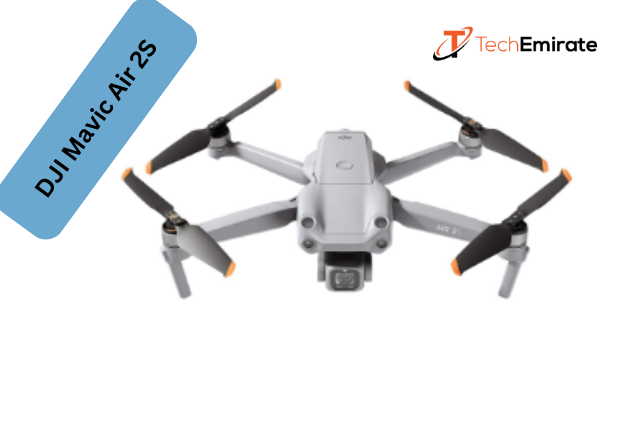
When it comes to finding the “Best Drone for Roof Estimating,” this drone has proven itself as a reliable workhorse. Also, offering a perfect blend of capabilities and affordability.
Specifications:
Camera:
The DJI Mavic Air 2S boasts a 20-megapixel camera equipped with a 1-inch CMOS sensor and an f/2.8 lens, featuring a 35-mm equal focal length of 22 mm. The drone’s 3-axis gimbal ensures your shots remain steady and blur-free.
Flight Control:
With integrated GPS, the Mavic Air 2S offers precise navigation and four-direction automatic obstacle avoidance, ensuring your inspections proceed smoothly and safely. Additionally, it features an automatic return-to-home function for added security.
Flight Time:
Enjoy extended flight time with the Mavic Air 2S, capable of staying airborne for up to 31 minutes. This extended duration is invaluable for mapping extensive roof surfaces efficiently.
Roof Inspection Software:
Thanks to DJI’s dominance in the drone market, the Mavic Air 2S benefits from a wealth of third-party inspection software options. Streamline your workflow and simplify your roof inspections with the integration of these software solutions.
Weight:
With a weight of 595 grams, the Mavic Air 2S complies with FAA regulations, making it suitable for various professional applications.
Why Do I Love This Drone?
The DJI Mavic Air 2S has quickly become my go-to choice for roof inspections, and here’s why I love it. This drone strikes the perfect balance between price and performance, offering a more affordable alternative to the Mavic 3 without compromising on capabilities.
Pros and Cons:
Pros:
- Affordable Excellence
- Improved Image Senso
- Automated Efficiency
- Impressive Flight Time
Cons:
- No Thermal Camera
“Don’t miss the chance of your roof inspections with the DJI Mavic Air 2S. Unlock the power of precision and affordability in one remarkable drone. ”
Parrot Anafi Work_ Best Drone for 3D Modeling Roofs

When it comes to selecting the perfect drone for your roof inspections. You want a versatile companion that offers top-notch performance and precise results.
The Parrot Anafi Work stands out as a remarkable mid-priced drone, competing head-to-head with industry giants like the DJI Mavic Air. In the world of aerial assessments, the Anafi Work, with its impeccable capabilities, almost feels tailor-made for roof inspections.
It not only offers automatic, programmable flight patterns but also has the unique ability to generate 3D models of buildings.
Additionally, what sets Parrot Drones apart is their commitment to safeguarding your data and ensuring the utmost privacy during your flights. The Anafi Work proudly flaunts zero no-fly zone restrictions, giving you unmatched freedom. Join us as we delve deeper into why the Parrot Anafi Work is one of the best drones for roof inspections.
Specifications:
Camera:
The Parrot Anafi Work boasts a powerful 21-megapixel camera that captures stunning imagery. It delivers 4K HDR video quality with a lossless zoom of 1.4x in 4K and an impressive 2.8x in full HD (1080p).
Flight Control:
This drone comes with an integrated GPS system, ensuring accurate navigation. It also features an automatic return-to-home function for added safety. Designed to withstand winds up to 50 km/h, it’s a reliable choice for outdoor inspections.
However, it’s worth noting that the Anafi Work lacks obstacle avoidance sensors, requiring a more cautious approach during manual flights.
Flight Time:
The drone offers up to 25 minutes of flight time on a single battery, but here’s the kicker – it comes with four batteries in the package. This means you can extend your flight sessions without missing a beat.
Roof Inspection Software:
The Parrot Anafi Work comes equipped with exceptional roof inspection software applications right out of the box. However, with the built-in software, you’ll be able to streamline your inspections with ease.
Thermal Camera:
It’s important to note that the Anafi Work does not have a built-in thermal camera. If thermal imaging is a priority for your inspections, consider the next drone on our list.
Weight:
Weighing in at just 320 grams, the Parrot Anafi Work adheres to FAA regulations, making it an efficient and lightweight tool for your roof inspection needs.
Why Do I Love This Drone?
The Parrot Anafi Work’s 21-megapixel camera and 4K HDR video capability are outstanding. The lossless zoom feature allows us to capture fine details without compromising on image quality.
Pros and Cons:
Pros:
- Impressive camera quality with excellent zoom capabilities
- The best drone for roof inspection
- Multiple batteries for extended flight sessions
- Lightweight and compliant with FAA regulations
Cons:
- Lack of obstacle avoidance sensors requires careful flight planning
- No built-in thermal camera for thermal imaging
“Grab the Parrot Anafi Work today and take your roof assessments to new heights! Your clients will thank you for the precision and efficiency this drone brings to your work.”
Parrot Anafi Thermal Drone_ Best Affordable Thermal Drone

When it comes to roof inspections, the choice of your tools can make all the difference. In the world of assessment, the Parrot Anafi Thermal Drone stands out as a remarkable game-changer.
Also, this high-quality drone is not only easy on the budget but also delivers exceptional performance. So, if you’re looking to enhance your roof inspection capabilities, let’s ride into what makes this drone an ideal companion.
Specifications:
Camera:
The Parrot Anafi Thermal Drone has not one but two cameras: a FLIR Lepton thermal imaging camera and a 4K HDR camera with lossless zoom. Additionally, it boasts a 21-megapixel Sony sensor designed specifically for visual inspection.
Flight Control:
This drone features integrated GPS for precise navigation and an automatic return-to-home function. It’s designed to withstand winds of up to 31 mph.
However, it’s important to note that this drone lacks obstacle avoidance sensors, which means that automated flights require careful programming, and manual operation should handled with caution.
Weight:
Weighing in at 496 grams, this drone is lightweight and adheres to FAA drone regulations.
Why Do I Love This Drone?
The Parrot Anafi Thermal Drone is one of the most cost-effective thermal imaging drones for professional use. It offers a significant bang for your buck without compromising on quality.
Pros and Cons:
Pros:
- Cost-effective, making it accessible to a broader range of professionals
- Dual cameras for thermal and visual inspection
- Respectable flight time and backup batteries
- Lightweight for easy portability and compliance with regulations
- The best drone for roof inspection
Cons:
- Lack of obstacle avoidance sensors requires extra caution during manual flights
- Limited compatibility with third-party software
“Parrot Anafi Thermal Drone is the best affordable thermal drone on the market. Enhance your inspections and impress your clients with this powerful tool at your disposal.”
About Drone Roof Inspections_ You Must Know
Here are some factors you need to know about drone roof inspections.
Getting Your Drone License
In case you want to fly drones in the U.S., there are some important rules to follow. The Federal Aviation Administration (FAA) is the boss when it comes to drones, and they’re pretty serious about it. But don’t worry; they’ve got lots of helpful info on their website to guide you into becoming a legit drone pilot.
Now, here’s the deal: if you plan to use a drone for work in the U.S., you need to go through the FAA process to become a drone pilot. Yes, even if you’re a landlord or a business owner who just wants to check out the roof of your own place.
So, what’s involved? First, you’ve got to register your drone and make sure it’s safe to fly. Then, you’ll need to grab your Remote Pilot Certificate from the FAA. It might sound a bit complicated, but trust us, people do it all the time, and it’s doable.
To get that Remote Pilot Certificate, you’ll have to pass the Part 107 test. No worries; there are some great study guides to help you ace it.
But here’s the fun part: if you’re just flying your drone for fun, like checking out your own roof for kicks, you don’t need a license. You also don’t need to spend on the fanciest drone out there.
This means you can buy the drone you’ll use for work and practice with it while you work towards getting your certificate.
For extra info and support, visit the FAA website’s “Recreational Flyers & Modeler Community-Based Organizations” section. It’s all there to help you navigate the drone world like a pro.
Why Use a Drone to Inspect a Roof?
Drones are a game-changer for roof inspections for two key reasons: safety and efficiency. They cut down on injury risks and, more importantly, they are time-savers.
Take a look at those hard-to-reach places on a roof, like tower roofs or high sections. Do you trying to set up ladders, climb up, and haul up another ladder? Drones take care of that.
Time is money, and drones save you both. While good drones can be pricey, it’s all about balancing the time they save against the cost. The best drones excel in flight duration, wind resistance, crash prevention, and photo quality.
A 2018 survey found that 57% of general contractors had already embraced drones. That number is on the rise for a good reason—drones are transforming the roofing industry.
How Can a Drone Help with a Roof Inspection?
Drones are vital tools for roof inspections, excelling at capturing high-quality images thanks to advanced cameras and specialized software. These drones create detailed 3-D roof models, offering a holistic view.
More so, roofing professionals use drones to identify materials, spot issues, measure dimensions, and respond rapidly to storm damage. Drones also help with routine maintenance and enhance inspection efficiency.
Drones and Thermal Roof Scans_ Best Drone for Roof Inspection
Our roof inspections are becoming more efficient and affordable thanks to drones equipped with thermal cameras.
The magic happens when the sun goes down. The best thermal drones take flight, and they don’t need daylight to work their wonders.
Why does this matter? Well, if you’re in the business of performing thermal imaging (roof inspections), it matters a lot. In fact, it can turn your venture into a highly profitable business. These thermal drones do more than just capture stunning shots; they also cut down on the time it takes to survey a roof.
Safety is another benefit of the drone. In this scenario, you are safely on the ground, controlling a drone with an infrared camera, not slinking around a roof in the dark. It’s a world of difference. No risks, no roof skills, just precise data collection.
Now, you might wonder if you need special permission to send your thermal drone into the night sky. The answer is yes, but it’s not as daunting as it sounds. The Federal Aviation Administration (FAA) offers waivers that allow you to fly your drone after dark.
Want to know more? Check out the FAA’s website, and you’ll discover that taking your thermal drone to new heights, even after sunset, is well within reach.
Practical Limitations of Drone Roof Inspections
When it comes to roof inspections, drones are a game-changer. But before you fully embrace the drone revolution, it’s vital to understand the practical limitations that come with this high-flying technology.
You must acknowledge the practical limitations of using drones for roof maintenance inspections and in-depth roof condition opinions. There are critical aspects of roof inspections that necessitate the boots-on-the-roof approach. Even the most advanced drones in your store won’t have the ability to check sealant adhesion.
Restricted Airspace for Drones
When it comes to drone-powered roof inspections, the sky’s the limit—well, almost. There are some areas where you can’t take your drone to the skies. And if the rooftop you need to inspect happens to be in one of these spots, you might find yourself in a bit of a bind.
So, what’s the deal with these no-fly zones, and how do you navigate around them?
First things first, it’s essential to know that flying a drone in certain areas is strictly off-limits, and for a good reason. These areas include national security installations, airports, prisons, and power plants, as well as the spaces around them. The size of these restricted zones can vary, influenced by state or local regulations.
So, how do you know if the roof you want to inspect falls into one of these no-fly zones? Well, two handy tools are at your disposal. The first is a feature called “geofencing.”
Geofencing uses your drone’s GPS system and internal software to automatically disable the drone when it ventures into one of these restricted areas.
Unfortunately, you can’t typically turn this feature off, and even if you have permission to fly in a no-fly zone, it can be a headache to convince the drone manufacturer to disable it.
The good news is that not all drones come with geofencing, so you might have a bit more flexibility with your choice of drone. Nevertheless, it’s vital to keep no-fly zones in mind when selecting your aerial tool.
In case you’re looking to double-check if an address is suitable for drone flights, DJI, a reputable drone manufacturer, offers a fly geozone map on its website. This map provides a comprehensive view of restricted areas and can be an invaluable resource.
Additionally, the Federal Aviation Administration (FAA) has your back with a free smartphone app called “B4UFLY.” This app is for recreational users, but it’s a fantastic resource for anyone looking to stay on the right side of the law when it comes to drone flights. It offers interactive maps and insights into where you can and cannot fly.
Things to consider| What to Look for in a Roof Inspection Drone?
When it comes to selecting the ideal drone for your roof inspection needs, several key factors can make or break the success of your operation. I’ve broken down these factors into easy-to-understand points to help you make a well-informed choice:
Battery Life and Flight Time:
One of the most crucial aspects of a roof inspection drone is its battery life and flight time. The best drones can stay airborne for at least 25 minutes when fully charged.
This ensures you have ample time to map a 30,000 square foot roof while capturing the desired level of image detail. Always have spare batteries at hand to extend your flight time when needed.
Camera Quality:
The primary purpose of acquiring the best camera drone is to obtain high-quality images. A top-notch camera contributes significantly to the drone’s overall cost.
But you don’t want a subpar camera that produces low-grade pictures. Opt for a drone with a higher quality camera, allowing you to complete inspections more efficiently while minimizing the risk of damaging the drone.
Flight Stability:
A reliable drone should be capable of functioning even in slightly windy conditions. To capture high-quality images, the drone’s flight control system must maintain stability even in the presence of wind.
Moreover, this ensures that your camera remains steady during hover, allowing you to take clear and sharp images. Additionally, stability is essential for avoiding obstacles during flight.
Gimbal_ Best Drone for Roof Inspection:
An integrated gimbal is a crucial feature that helps keep the camera steady while the drone is in motion. Whether it’s due to wind or deliberate movement, a gimbal allows you to capture quality images without the need for the drone to hover perfectly still.
So, this ensures that even in windy conditions, the drone can still produce excellent images.
GPS System:
A reliable integrated GPS system is essential for automatic and programmable flights. It enables the drone to return automatically after completing a mission and enhances its ability to hover in a fixed position. A robust GPS system is also necessary for creating software-generated roof plans.
Range:
While maximum flight range might not be a primary concern for roof inspections, the drones we’ve selected for our list offer more than sufficient range for this purpose. You can confidently fly them over nearby roofs without concern.
Ruggedness:
Your roof inspection drone should be durable and rugged, designed to withstand regular field use without becoming fragile or easily damaged. It’s a tool, and you’ll need something that can withstand the rigors of the job.
Software Options:
The best drones are compatible with specialized inspection software. While third-party software can automate your roof inspections, it’s crucial to ensure your chosen drone works seamlessly with these applications.
You’ve chosen drones that either come with excellent drone inspection apps from the manufacturer or are compatible with third-party inspection software, simplifying your workflow.
Speed:
Speed is generally not a critical criterion when selecting a roof inspection drone. These drones aren’t meant for racing; they’re designed for precision.
Video Quality:
While most drones has with video capabilities, video quality is not the primary concern for roof inspections. High-end consumer drones often tout professional-grade video capabilities, but for your purpose, you don’t need to invest in these features.
Weight:
Keep an eye on drone weight due to FAA regulations. Drones weighing 0.55 pounds or less (less than 250 grams) and flown solely under the Exception for Recreational Flyers do not require registration.
Abstract
Lastly, picking the perfect drone for inspecting roofs can enhance your skills, providing accuracy, efficiency, and great picture quality. Above, I described the six best drones for roof inspection.
Furthermore, they all have there own great features that make them special. You can choose one of them.
Additionally, the right roof inspection drone can make a tough job easier, so choose wisely and rise to new heights in the world of roof inspections.
Frequently Asked Questions
How long can a roof inspection drone typically fly on a single charge?
Flight time can vary, but a good roof inspection drone should provide at least 25 minutes of flying time. Some models come with multiple batteries, extending the flight duration, so you can complete more inspections without frequent recharging.
Do I need a drone with thermal imaging for roof inspections?
It’s not essential for all inspections, but if thermal imaging is a priority in your work, opt for a drone with this capability.
Are there any legal requirements or regulations for using drones in roof inspections?
Yes, there are regulations set by aviation authorities like the FAA in the United States. Drones used for commercial purposes, including roof inspections, typically require registration, and operators must follow specific guidelines. Always ensure you comply with local regulations and get the necessary permits when using drones for inspections.
What are the key features to look for in the best drone for roof inspection?
When considering a drone for roof inspection, focus on features like camera quality, flight stability, obstacle avoidance, thermal imaging capability, and compatibility with roof inspection software. These aspects can greatly impact the effectiveness of your inspections.

